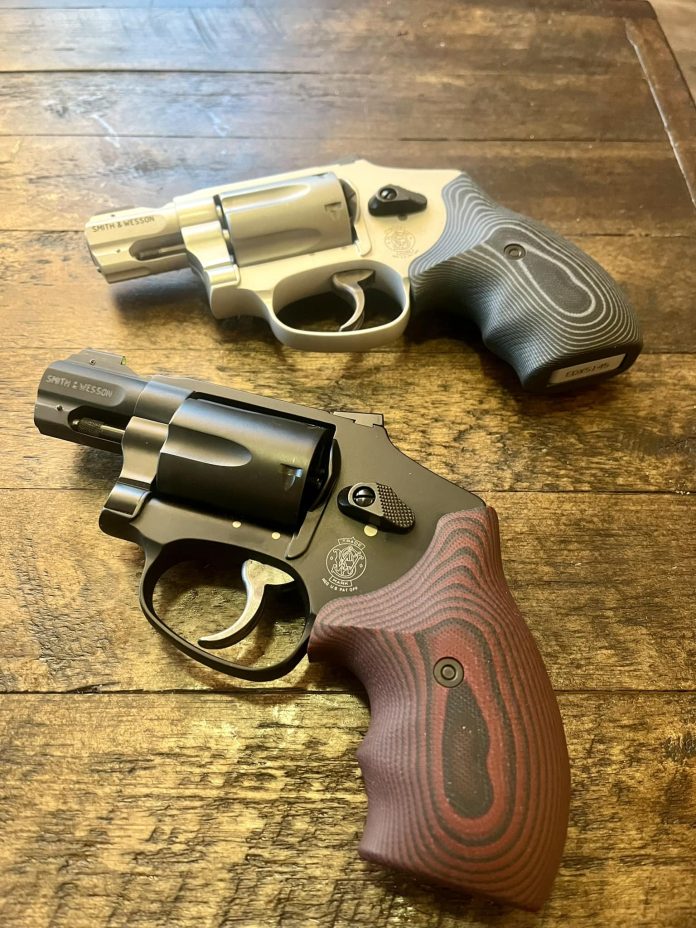I’ve been excited to see the new Lispeys snub revolvers that my friends Bryan Eastridge and Darryl Bolke had a hand in designing since they were introduced at the SHOT show this year. For those unfamiliar with the guns, check out my last two Weekend Knowledge Dumps for more articles about the background and features of the guns.
Basically, these are snubs that fixed most of the issues that have plagued snub revolvers for a century now. Most snubs have crappy triggers, invisible sights, and poorly designed grips. These new designs address all of those issues straight from the factory. I ordered both a .38 and a .32. They arrived at my FFL and I picked them up last week.
I dry fired both about 100 times and then took them to the range for a quick test. I didn’t shoot them a lot, so this article will be limited to my initial impressions. I’ll do a more thorough review once I work with them some more.
Both triggers were better than the normal factory guns, but both had a distinctively different feel. The .38 was very smooth with no stacking and was almost made for “staging” the trigger (don’t do that). The .32 stacked heavily at the beginning and then just “snapped” when it broke. I talked to Bryan about the weird feeling and he suggested taking the sideplate off and lubing the internal parts. I didn’t have time to do that, but will do it before I shoot the guns again.
I was impressed with the fit and finish of both the guns. I was more impressed by the fact that the guns actually functioned. The last four new Smith and Wesson revolvers I’ve purchased have needed to go back to the factory immediately after firing the first cylinder. Two of the guns had triggers that would not return to the fire position after shooting. One was so badly out of time that I was being hit in the face with bullet fragments during every shot. The last one shot eight inches right and six inches high at a distance of 10 feet.
These new guns had none of those problems.
I started out by shooting the .38. I grabbed the wrong ammo can before I left for the range. I thought I was grabbing a can of 148 grain target wadcutters. Instead, I grabbed a bunch of 158 grain +P ammo. That stuff wasn’t pleasant to fire out of the airweight. I fired 15 rounds of it before my beat up hands tapped out.
It was very windy at the range and my target was swaying back and forth. I was still able to shoot a decent group at 30 feet. The vertical stringing was (mostly) the fault of the moving target.
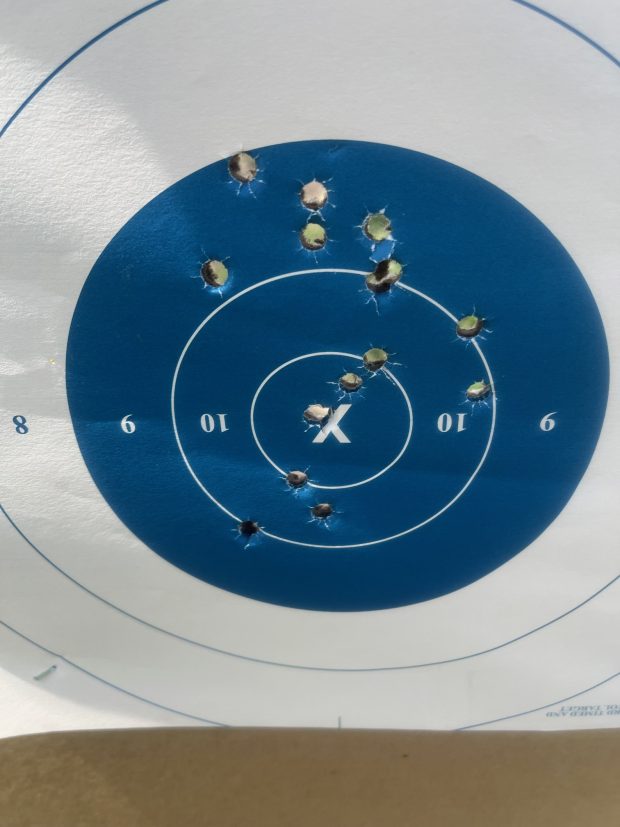
The .38 results
I liked the grips, but they weren’t optimal for softening heavy recoil. I look forward to trying it again with lighter loads.
After I test fired the .38, I moved on to the .32. I only own two other .32 revolvers and both are antiques. I was excited to see how the more modern gun worked out.
I dug out some old .32 ammo from my ammo stash. I pulled out one box each of .32 short, .32 long, and .32 magnum. I started by firing six shots of each slow fire at the same target at 30 feet. I was stunned how closely all the rounds impacted.
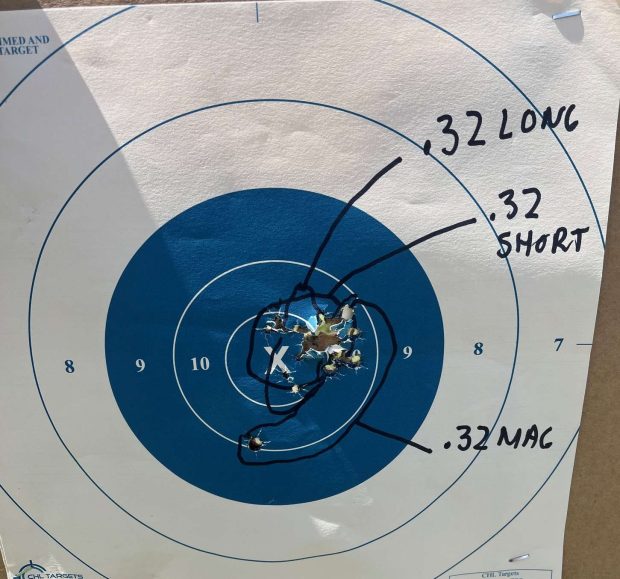
As far as recoil goes, I would say that the .32 short felt like shooting my airlite .22 magnum. Almost no recoil at all.
The .32 long seemed like it had about 20% more recoil than a .22 out of the same gun. Nearly nothing.
The .32 magnum had probably 2/3 the recoil of a .38 wadcutter out of the same size gun. Very controllable.
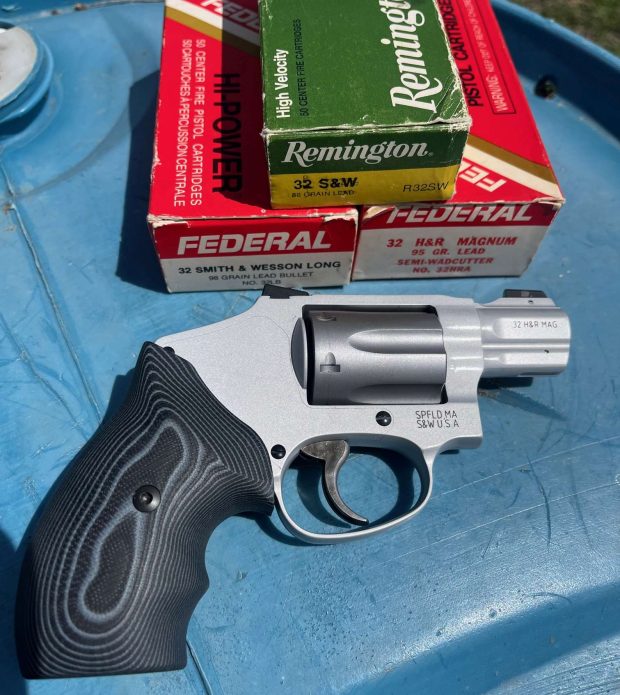
I finished the box of each of the .32 rounds shooting some steel. A-zone steel at 25 meters was no problem at all with any of the loads. Then I moved on to the plate rack at 30 feet. The .32 short and long would not drop a single plate, despite good hits. The .32 magnum dropped half of the plates I shot. A plate rack isn’t a ballistic test, but does give you an idea about the amount of energy you are shooting.
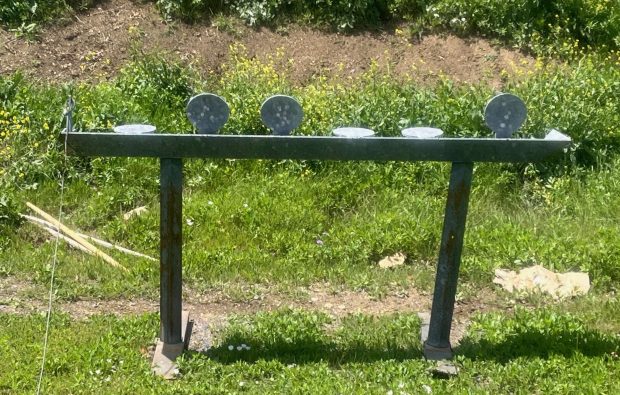
.32 magnum plate rack results. The impacts on the standing plates are the other .32 rounds I fired at them.
I really enjoyed shooting both guns and look forward to digging deeper into their capabilities in the next couple months.


